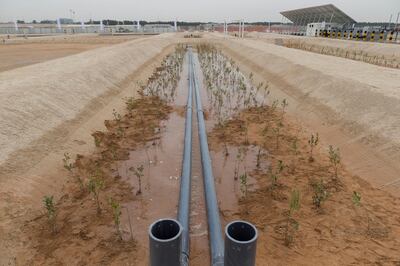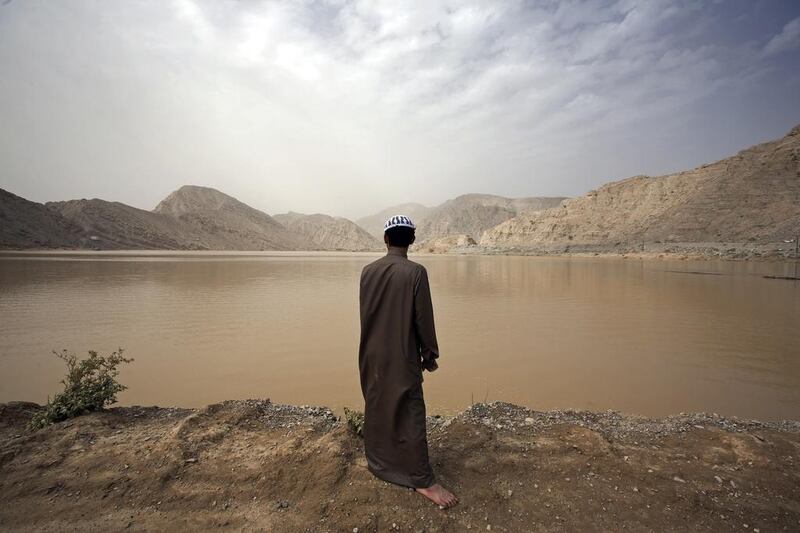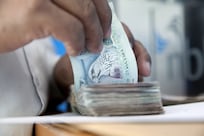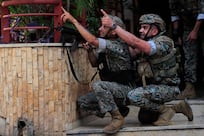With all the talk of carbon footprints, another, less-discussed issue of critical importance in the drive to sustainability, particularly in the Middle East, is that of water footprints. A water footprint is a measure of how much water is used within the entire supply chain – be it of a product, an individual, a household, country or even an entire region.
A surprising amount of water goes into making many goods. Most people never think about water when they look at cheese, potatoes, and wheat, but a lot is used in producing such things.
And each footprint contains different categories of water used – known as green, blue and grey. Green water is water from rains, dew, and fogs that stays in the land, plants and trees. Blue water is the water found in lakes, ponds, rivers and underground aquifers. And grey water is wastewater from households, industry, and commerce.
A 125 millilitre cup of coffee’s water footprint is about 132 litres, given the water that went into the growing, cleaning, processing and other activities along its supply chain. One kilogram of beef uses about 1545l of water through its supply chain. Whereas coffee is made almost exclusively with green water, beef contains mostly green water with some blue and little grey. Rice uses about 2497l of water per kg, with most of the water still being green, but a considerable amount of blue and small amount of grey.
When we take stock of a product's entire water footprint – all of the water used to make it or embedded within the product itself, without distinguishing between the categories of water involved – we are talking about the "virtual water" contained in that product. And that is a useful concept not only to consider our own water usage and waste, but also how we trade water with one another to meet our needs.
Countries in the Middle East tend to be water-scarce; the people who live in them need far more water than their countries produce – not only for drinking and sanitation, but to grow and manufacturer things they need. So, when they import things, they are importing by proxy the water they would have needed to make those things – the "virtual water". However, when one buys a bag of imported rice, does the bag have its virtual water content on it? No.

The amount of water traded virtually through the imports and exports so far this year alone could be well over 1.4 trillion tons. Clearly, this is an important trade to understand better.
The focus is not just on the virtual water coming in, but that going out, too. There are increasing concerns in India, for example, about the country's virtual water exports, which were estimated to be 26 trillion litres a year recently. There are increasing concerns in the US state of Arizona about the water from that increasingly water-stressed state that is being used to export livestock feed to Saudi Arabia. These are just two of many places that are worried about the virtual export of their water. Because of population growth, climate change, droughts and their own overuse of their water, many more places are concerned about virtual water trade, even if they do not use that term.
On the other side of the virtual water trade are places like some Gulf countries, which currently must import over 85 per cent of their food. According to PWC, a global accounting firm, nearly all rice is imported, as is 93 per cent of cereals, 62 per cent of meat and 56 per cent of vegetables. That level of virtual water demand must factor into the regional conversation on sustainability, including food self-sufficiency and food security.
In fact, that is already happening. Companies in Saudi Arabia and the UAE are investigating ways to grow saline crops or use seawater for greenhouses. The International Centre for Biosaline Agriculture in Dubai is also looking into such issues. And there is a greater focus on using wastewater more efficiently, and reducing water use and food waste. The latter is one of the best ways to reduce reliance on virtual water trade. Stockpiling food and new and creative agricultural methods are also important.
For some time to come, however, countries in the region will have to continue to rely on virtual water trade in food and other products to make up for what they cannot do with their natural water or land resources. The GCC states know about these issues surrounding water and food security and are working on them. Focusing on the circular economy “Rs” (reduce, reuse and recycle) really does go a long way to improving water and food security in the region. Understanding water footprints and virtual water trade could help boost the awareness needed to ingrain these practices into the wider public. But it can also help policymakers plan to secure the water their societies need – be it the kind that flows through the tap, or the kind that just exists virtually.





